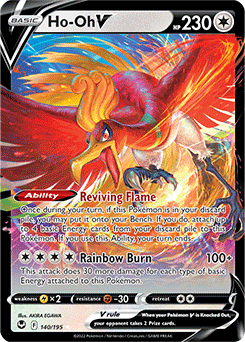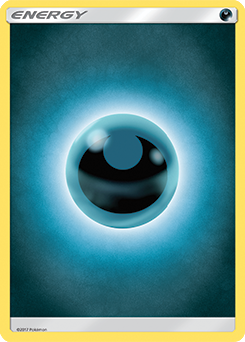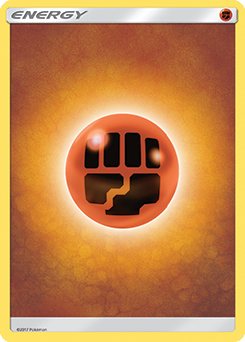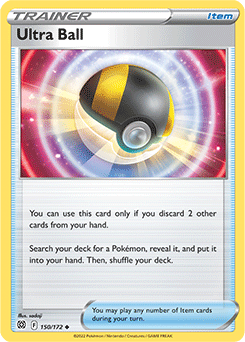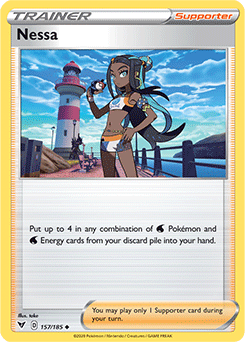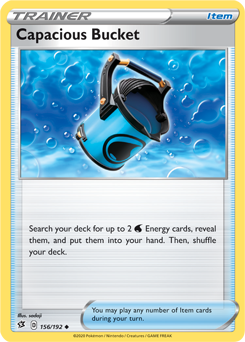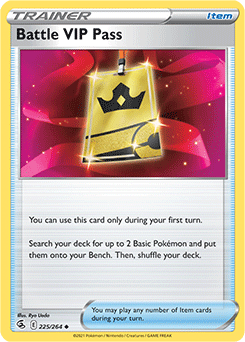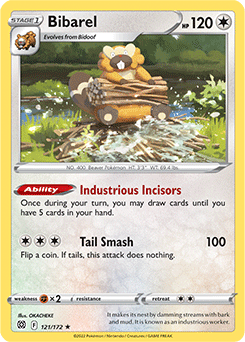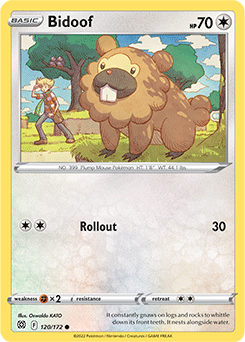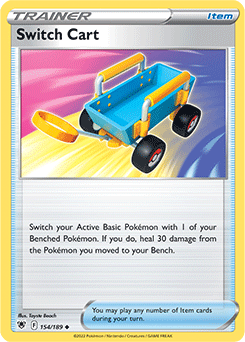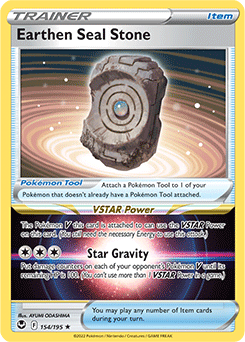Without a doubt, the Sword & Shield—Silver Tempest expansion includes powerful cards that will instantly find their way into competitive decks. But don’t sleep on cards that at first glance seem more suitable for your card binder than for leading your next Pokémon TCG battle. With the right strategies, Pokémon like Ho-Oh V, Chesnaught V, and Wailord can be as fun to play as they are cool to look at.
We’ve asked three Pokémon TCG experts to take these cards for a spin and put together decks that are worth a second look when it comes time to battle!
Robin Schulz: Ho-Oh V

With all the talk about Lugia right now, it’s easy to forget that Ho-Oh, its Legendary partner from the Johto region, also got a new card in Sword & Shield—Silver Tempest!
I find Ho-Oh V to be very interesting. It’s a bit complicated to make it work, but it can do quite a lot of damage. With four different types of Energy attached, its Rainbow Burn attack hits for 220 damage, which is exactly enough to Knock Out most other Pokémon V. Add two more Energy types and it can do 280 damage, which is enough to take down Pokémon VSTAR. If we somehow get all eight different types of Energy onto a Ho-Oh V, it can even Knock Out Pokémon VMAX!
Of course, the biggest concern is exactly how to attach all these different Energy to Ho-Oh V. Part of the answer is by using its own Ability, Reviving Flame. For the cost of ending the turn, Ho-Oh V can move itself from the discard pile to your Bench, along with any 4 basic Energy! The second part of the answer will be Klinklang, another new Pokémon from the Sword & Shield—Silver Tempest expansion.
Reviving Flames
Most cards in the deck revolve around getting Ho-Oh V and Energy into the discard pile as quickly as possible. Two key cards are Radiant Greninja and Scoop Up Net: Radiant Greninja allows us to discard an Energy to draw two new cards, while Scoop Up Net can reset Radiant Greninja so we can use the Concealed Cards Ability again. This combination is amazing, and I don’t think the deck would work without it. Playing two of every available Energy type makes it easy to find enough of them to discard.

This deck requires us to include four copies each of Quick Ball, Ultra Ball, and Professor’s Research to help us get Ho-Oh V into the discard pile. PokéStop is another great card for us, filling the discard pile while helping find those important Item cards. I also like Allister as an additional Supporter. Drawing three cards might not be impressive, but having the precise choice on what to discard is very helpful. To top out the Supporter lineup, we have two copies of Serena. Serena can act as another way to discard and draw cards, or to pull up opposing Pokémon V from the Bench.
Again, Reviving Flame has a major drawback: it ends the turn. This means the opponent could target our Ho-Oh V before we even get a chance to attack with it. That’s why Diancie is an important part of the deck! If we revive Ho-Oh V while having a Diancie in the Active Spot, the Princess’s Curtain Ability will protect it from cards like Boss’s Orders or Serena. This way, we can control when we bring Ho-Oh V into the battle.
We want to open with Diancie as consistently as possible, which is why I’ve included four of them in the deck list. Conversely, we do not want to open with a Ho-Oh V—it should be put into play only with its own Ability, which is why the deck list only has three of them.
Triple Gears
By using our discard engine in combination with Diancie, we reliably set up Ho-Oh V with four different Energy. Against some decks that’s good enough, but as calculated earlier, we need a few more Energy to Knock Out Pokémon VSTAR. Manually finding and attaching the missing types would be unreliable, so I’ve decided to add Klinklang to the strategy. We can use the early turns in which we hide behind Diancie to also build up the Klinklang line on the Bench. When it’s time to attack, its Triple Gears Ability can search the deck for exactly the types of Energy that we are missing, making it so Ho-Oh V will Knock Out any Pokémon we want! Thanks to Scoop Up Net, we can even pick up Klinklang and reuse it. If we happen to discard too many pieces of the Evolution line, or if we don’t have enough Energy left in the deck, the one Ordinary Rod can fix the issue.

It’s worth noting that Klinklang has a usable attack that allows us to Knock Out otherwise annoying Pokémon like Miltank from Sword & Shield—Astral Radiance.
The deck may have a lot of moving parts, but our overall strategy is not complicated. First, discard enough cards to utilize Reviving Flame while protecting the Bench with Diancie. Then use Klinklang to find additional Energy types and score big Knock Outs! We should be able to set up two Ho-Oh V that hit for close to maximum damage every game. When attaching a Cape of Toughness, Ho-Oh V has an impressive 280 HP, which is enough to withstand most attacks and run over the opponent!
The deck does have its weaknesses, but I guarantee you will have a fun time if you try it out! There’s just something about KO’ing a Pokémon VMAX while having eight different types of Energy attached to your Active Pokémon.
Ross’s thoughts: Robin’s Ho-Oh deck looks really fun. I love aggressive decks that try to hit a big combination. Attaching all eight Energy types on one Pokémon would be cool, and I think Robin’s deck should accomplish it occasionally. Stage 2 Pokémon are often hard to bring out, but this deck looks like it would be a monster if two Klinklang could enable a second Ho-Oh to do big damage.
It’s cool to see Allister in this deck. This card hasn’t been a top choice for most decks, but when your goal is to discard five cards on turn 1 (4 unique Energy and Ho-Oh V), three discards is a valuable effect.
Xander’s thoughts: I like how Robin balances the early game potential of Ho-Oh V’s Reviving Flames with the late-game potential of Klinklang’s Triple Gears. While the Energy from Reviving Flames plus an attachment is not enough to pick up Knock Outs on Pokémon VSTAR and VMAX, the extra oomph from Klinklang puts your damage output over the top. And with Diancie, you are safe to wait until an opportune time to strike. If you want to win with this deck, you must deal with your opponent’s threats turn after turn rather than simply racing to take your Prize cards. One fun play that can catch an opponent by surprise is attacking with Radiant Greninja. With Triple Gears and both Water Energy attached, you might be able to Knock Out multiple Pokémon at once!
Ross Cawthon: Wailord

Wailord from the Sword & Shield—Silver Tempest expansion is a card with big potential. At 200 HP (effectively 230 HP when you consider its Jumbo-Sized Ability), it has the most HP for a one-Prize Pokémon ever, and the highest HP to Prize-card ratio of any Pokémon ever printed. Cards with high HP usually have little attack power, but Wailord’s Special Wave attack does a powerful 240 damage.
The main drawback is Special Wave’s expensive attack cost. There’s a natural partner to power up Wailord: Frosmoth with its Ice Dance Ability. With support cards like Capacious Bucket and Nessa, the possibility of attaching 4 Energy in one turn to Wailord is very real. Here is the list I settled on:
Beyond the natural pairing with Frosmoth, there are multiple ways you can play Wailord—the biggest decision is whether you want to focus on offense or defense.
After trying both styles, I decided that I like the offensive style a bit better. My deck list reflects that fact. In the Standard format right now, 280 damage is sort of a magic number: many of the best decks revolve around Pokémon with 280 HP like Lugia VSTAR, Giratina VSTAR, Palkia VSTAR, and Arceus VSTAR. With just a Choice Belt and a damage counter from Galarian Zigzagoon’s Headbutt Tantrum Ability, you can hit for 280 damage. The offensive style list also gives you a little more flexibility in the Special Energy that you play.
Some of the defensive styles that I tried included Pot Helmet instead of Choice Belt, and also played V Guard Energy. Because of this, I was forced to cut some of the Capture Energy. This type of list is tempting: in some cases you can make your Wailord have effectively 290 HP! However, cards like Lugia VSTAR and Giratina VSTAR still have ways to KO you in one attack, which is the main reason that I prefer the offensive style.
Building out the rest of the list has been a challenge. Two Stage 1 Pokémon and a fairly high count of Energy cards (or cards that get Energy) take up much of the deck space. Since I wanted to avoid playing two-Prize Pokémon (which would be clear targets for my opponent), I tried to maximize the number of good Supporter cards to help my setup. Probably the oddest counts in my deck are the Pokémon-searching Items, which I play very few of. I can do this, though, since I play four Irida to find Water-type Pokémon as well as something else I need, like a Capacious Bucket. Also, since I need to play Special Energy for Wailord anyway, I’ve chosen to go with four Capture Energy. In addition, Snom’s Call for Family attack can find a Basic Pokémon. With all of these in use (and Nessa to recover Pokémon), I’ve found I can effectively Pokémon search.

An important support Pokémon here is Radiant Greninja. Getting extra cards from Radiant Greninja’s Concealed Cards Ability is key to getting the deck going. Also, Frosmoth can power Radiant Greninja’s Moonlight Shuriken attack, which is very powerful versus decks that aren’t playing Manaphy.
I also play a Mew. While I do not have as many Pokémon search Items as most decks, I still have 18 that play important roles in getting Energy, switching, or doing more damage. This deck needs to play cards like Air Balloon and Scoop Up Net to change Active Pokémon, since Frosmoth only powers up the Bench. When you play these cards, it is often worth playing a pivot Pokémon like Mew that gives you extra cards from the Active Spot before moving to the Bench. It could be worth using Celebi instead to find Energy cards (including Special Energy).
The last choices of cards I wanted to comment on were the Special Energy. I’ve tried combinations of Capture Energy, Wash Water Energy, V Guard Energy, and Gift Energy. If I added more Pokémon search Items, I could potentially change out some of the Capture Energy for other choices that offer more utility. Wash Water Energy is good against Sableye—and I find myself needing the Water Energy it provides—so it earns the last spot.
I’m still experimenting with different draw engines; this doesn’t quite feel like the optimal list. This deck is definitely strong when it gets going, though, so give it a try and see what you think. You’ll leave your opponents blubbering when you pull off the 280-damage combo!
Robin’s thoughts: I'm a big fan of this Wailord deck. The immense number of HP should give it an advantage against most other single-Prize decks, while the Choice Belt and Galarian Zigzagoon combo gives it a good plan against VSTAR decks. It even has an efficient way of dealing with Pokémon VMAX: Greninja's Moonlight Shuriken!
Ross makes really good use of all the powerful support that Water types have access to in the current Standard format. The longer I look at the deck list, the more I like it. If Wailord was of any other type, I don't think it would stand a chance. However, with the unique way Water-type decks can be built, this actually looks quite interesting.
Xander’s thoughts: The lack of multi-Prize Pokémon is what makes this deck strong. Without an easy target for Serena, most times the opponent will need to hit into Wailord, potentially without doing enough damage for a Knock Out. Even if they do pick up a Knock Out, Nessa is perfect for recovering the cards needed to attack with another Wailord on the following turn.
It’s also smart to use Capture Energy to fulfill the Special Energy requirement for the damage boost. Because Wailord will already out-trade decks with the Choice Belt plus Galarian Zigzagoon combo, the correct directional lean is toward more consistency. Other Special Energy cards may have flashier effects but would ultimately dampen Wailord’s potential.
Xander Pero: Chesnaught V

Chesnaught V from the new Sword & Shield—Silver Tempest expansion can teach us a valuable lesson: individually we are weak, but together we are strong. Such is the nature of its Ability, Needle Line. If your opponent attacks into a Chesnaught V in the Active Spot, then for each Chesnaught V you have in play, the opponent’s Active Pokémon will take three damage counters. This damage may seem inconsequential at first glance. However, because this Ability stacks, your opponent’s Active Pokémon could be on the receiving end of up to 12 damage counters with each attack.
There are three important factors to consider when building a deck around Chesnaught V. The first is setting up your board with multiple Chesnaught V as soon as possible. You want to put all four into play immediately so that any incoming attacks will be doing maximum output damage once the opponent can attack. There are several options that efficiently search for Basic Pokémon, but I’ve gone with the Battle VIP Pass route because it can be effective when going either first or second.
The second factor is the number of times you are attacked in a game. Because Needle Line activates with each attack, it is in your best interest to aim for a long game with many attacks rather than a short one with few attacks. This directly translates to survivability, which we can induce by adding defensive cards. Radiant Gardevoir, Cape of Toughness, Circhester Bath, and V Guard Energy all reduce damage. Adding this onto Chesnaught V’s base 230 HP, an attack from a Pokémon V will need to do 350 damage in order to pick up a Knock Out!
The final factor is supplying Touchdown’s attack cost. Attaching 3 Energy manually would take too many turns, so another option is needed. Thanks to Gardenia’s Vigor, this requirement can be fulfilled within a single turn via its effect plus the manual attachment. The main drawback of Gardenia’s Vigor is that you aren’t playing a stronger Supporter card like Professor’s Research. You’re making a tradeoff between Energy acceleration and draw power. Therefore, you can include Bibarel to net a few additional cards per turn, hopefully giving you the necessary tools to keep up.
Because our deck’s singular strategy is to attack with Chesnaught V, then contributing the great majority of our deck list to that strategy makes the most sense. One particular tricky card in the list is Earthen Seal Stone. This card is great because it lets us have a VSTAR Power, even though we don’t play any Pokémon VSTAR to begin with. Forest Seal Stone is also a suitable choice, but I’ve gone with Earthen Seal Stone because its attack can soften a swarm of Pokémon V the opponent may have in play. By spreading damage across the field, all of the opponent’s Pokémon V will be in range of a Knock Out from a quadruple-Chesnaught V Needle Line or Touchdown, unless they’ve increased their HP through Evolution or some other means.
An important thing to remember is that Gardenia’s Vigor can only attach Grass Energy to a Benched Pokémon. This means that you’ll need a switching effect to pivot your Active Pokémon if it doesn’t have the necessary Energy to attack. Mew is the perfect pivot Pokémon. It allows you to grab an Item card—Pokégear 3.0 or Cape of Toughness, for example—to continue with the Chesnaught V brigade. Air Balloon is the appropriate Tool for Mew because you won’t need to waste a switching effect or attach an Energy to retreat.
Bench space is something to be mindful of throughout the game. You want four total spots for Chesnaught V, which leaves two spots for Mew, Bibarel, or Radiant Gardevoir. Though you’ll put Mew into play early in the game to set up, I recommend leaving the other two spots for Bibarel and Radiant Gardevoir. However, if Radiant Gardevoir’s damage reduction is not relevant, keep Mew in play so you can reuse its Mysterious Tail Ability when needed.
Ross’s thoughts: Chesnaught V is a very scary card. Taking 12 damage counters with every attack is almost unheard of. Some popular Pokémon like Cramorant and Regieleki will be Knocked Out just for attacking! Xander is right in saying the way to maximize this is to simply make your opponent attack more often, and this format does have several defensive modifiers that Xander utilizes.
Like Xander said, the biggest challenge to this deck will be draw power. I’m concerned that you only have 2 Bench spaces for support Pokémon and rely on a Supporter that draws only two cards (I do miss Welder...). Still, Chesnaught V’s Ability with the defensive boosts makes it seem like a real contender to outlast your opponent and take six points, err, Prize cards.
Robin’s thoughts: I love the inclusion of the Earthen Seal Stone. It's not a card I expected to find in the list, but it makes so much sense in combination with the Needle Line Ability! Dropping all the opponent's Pokémon V down to 100 HP and then watching them KO themselves as they try to take down a Chesnaught V sounds like a ton of fun.
I wish Grass-type Pokémon had slightly better support; even Gardenia's Vigor is a bit disappointing in the fact that it can’t attach to an Active Pokémon. I think Xander does a great job at working around these limitations, though, and the result looks like a deck that can hold its own against some of the more popular ones!

Ross Cawthon is a longtime player, starting to play tournaments in 2000. He is the only player to compete in all 20 Pokémon TCG World Championships, finishing as a finalist in 2005 and 2011, and a semifinalist in 2016. He is known for creating many new “rogue” decks over the years. Ross has a Ph.D. in astrophysics and studies dark energy (not to be confused with Darkness Energy cards).

Xander Pero is a contributing writer for Pokemon.com. He was an avid fan until discovering sanctioned tournaments in 2009. He formerly traveled often for the Top 16 circuit, but now spends his time focusing on university, where he studies industrial engineering. You can find him at various tournaments, as well as on X at @xanderpero.

Robin Schulz is a contributing writer for Pokemon.com. He has been competing in Pokémon tournaments for 10 years and was the Pokémon TCG Masters Division World Champion in 2018. He spends a lot of time traveling and competing, and he rarely misses a big event. Aside from playing Pokémon, he attends university, where he is studying mathematics.

